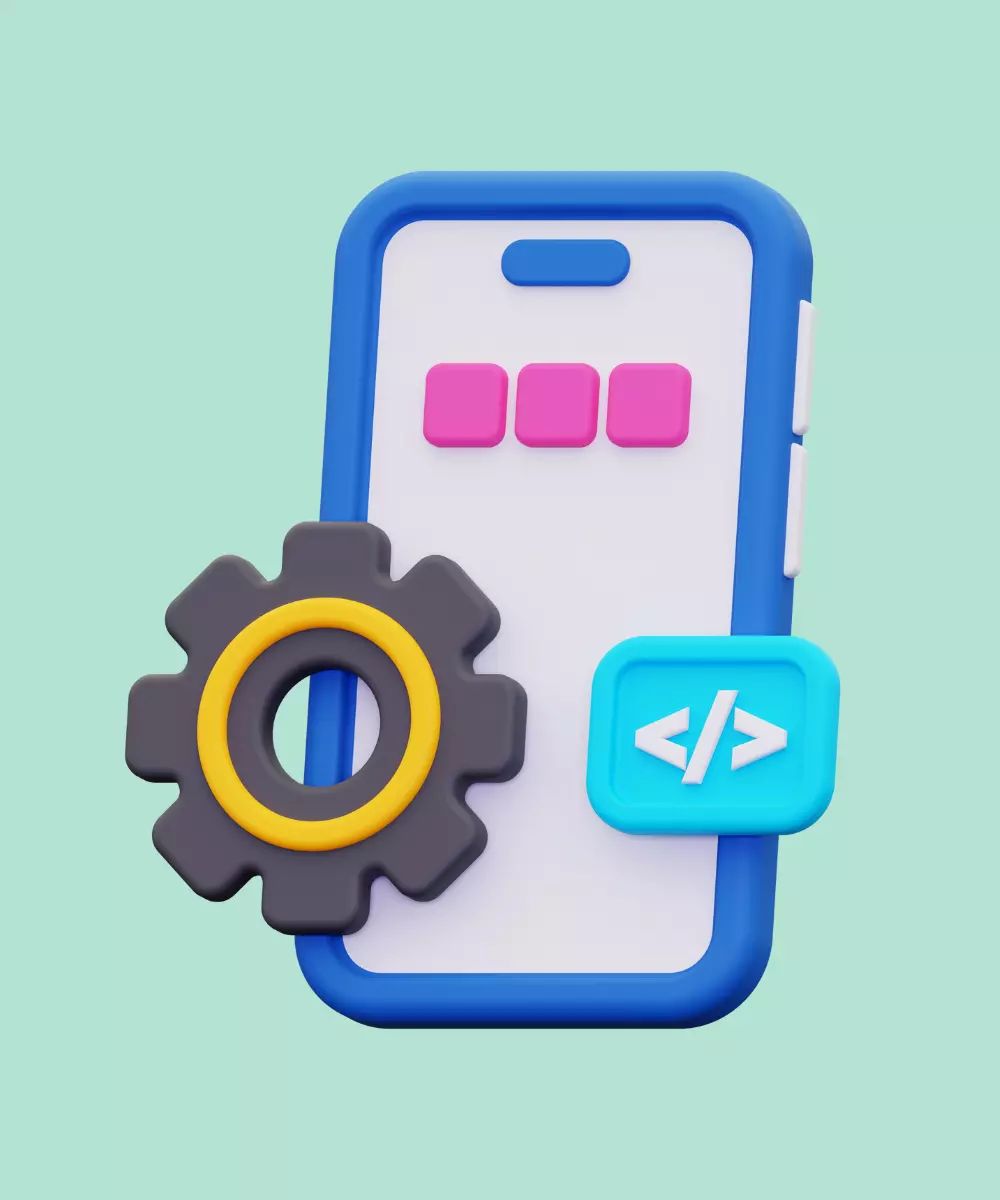In the dynamic world of digital transformation, mobile apps have evolved from mere luxury to an indispensable tool. As 2024 unfolds, the demand for unique, user-friendly, and high-performance apps is skyrocketing, driving businesses to seek innovative development avenues.
While many firms possess in-house talent, the escalating complexity of the digital ecosystem is pushing a significant number toward outsourcing. Mobile app development outsourcing, when executed correctly, can offer enhanced flexibility, access to global expertise, and cost-efficiency. However, the process is not without its challenges. This article aims to elucidate the nuances of outsourcing in the current year, providing actionable insights and best practices to ensure businesses leverage its full potential.
Benefits of Outsourcing App Development

Outsourcing mobile app development has surged in popularity over the past few years, and there are several compelling reasons why. From financial advantages to tapping into global talent, here's a comprehensive look into the benefits:
Cost efficiency
- Reduced overheads: Building an in-house team comes with added costs - from hiring to training and infrastructure. Outsourcing eliminates these overheads.
- Budget flexibility: Outsourcing allows you to pay for only the services you need, offering flexibility to control expenses based on project requirements.
Access to expertise
- Global talent pool: Outsourcing means you're not limited by geography. You can access top professionals from around the world who are adept in platforms like Flutter.
- Specialized knowledge: By outsourcing, you can find teams or individuals who specialize in a particular niche or technology, ensuring quality and expertise in that domain.
Scalability and flexibility
- Quick scaling: Depending on the project's needs, you can easily scale the team size up or down without the long-term commitment of permanent hiring.
- Diverse skill sets: With outsourcing, you can bring in professionals with varied skill sets for different stages of the project, ensuring each phase is handled by experts.
Time-saving
- Quick turnaround: Multiple professionals can work on various aspects of your project simultaneously, reducing the time to market.
- Focus on core activities: Outsourcing app development allows your internal team to concentrate on core business activities, ensuring no dilution of focus.
State-of-the-art technology
- Access to latest tools: Many outsourcing agencies invest heavily in the latest development tools and technologies. By partnering with them, you indirectly get access to these without additional costs.
- Continuous learning: Outsourced teams often work on varied projects, making them more aware of the latest trends and technologies, which can be advantageous for your project.
Risk management
- Shared responsibilities: Outsourcing means sharing the risks associated with app development. If challenges arise, both parties work collaboratively towards a solution.
- Backup and recovery: Established firms usually have robust data backup and recovery solutions in place, ensuring your project's safety.
According to a study by Statista, the global outsourcing market has shown consistent growth, reflecting the manifold advantages businesses derive from it. By leveraging these benefits, businesses can craft a unique mobile app that stands out in the market while ensuring efficiency and quality in development.
Options for Outsourcing Mobile Application Development
Navigating through the vast landscape of mobile application development can be complex. Yet, knowing your outsourcing options can set the foundation for a successful collaboration. Let's delve deeper into these choices.
Dedicated development teams
- What it is: These are specialized teams assigned solely to your project, functioning as an extension of your in-house teams.
- Why opt for them: They offer comprehensive solutions, from the initial ideation to post-launch maintenance, ensuring consistency and quality. Regular interactions also mean there's a deep understanding of your business culture and objectives. In one of our article we delve into how hiring a dedicated development team can boost your app's success and simplify the development process.

Freelancers
- What it is: Independent professionals specializing in specific areas of mobile app development, hired on a project or task basis.
- Why opt for them: For projects with clear-cut requirements or for tasks requiring niche expertise, freelancers can be a cost-effective choice. Platforms like Upwork and Toptal provide access to a vast pool of freelancers with diverse skills.
Full-service development agencies
- What it is: These are one-stop solutions for all your app development needs. They typically house diverse teams that cover all phases of app development.
- Why opt for them: For businesses looking for holistic solutions, from conceptualizing an idea to marketing the finished product, these agencies offer the advantage of consolidated expertise. Their comprehensive portfolios provide a sense of reliability.
Boutique development firms
- What it is: Smaller firms specializing in particular niches or technologies within the app development world.
- Why opt for them: If your project requires deep expertise in a specific area, such as augmented reality, IoT integration, or even platforms like Flutter, boutique firms can offer unparalleled expertise.
Crowdsourcing platforms
- What it is: Online platforms where businesses can post their app development needs, and developers from around the world can submit solutions.
- Why opt for them: Crowdsourcing can be an innovative way to gather diverse solutions and approaches to a problem. Platforms like Topcoder provide access to a community of talented developers.
Offshore, nearshore, and onshore development centers
- What it is: This pertains to the geographical location of the outsourced team.
Offshore: Teams from distant countries.
Nearshore: Teams from neighboring countries.
Onshore: Teams from within your country.
- Why opt for them: Each offers unique advantages. Offshoring can be cost-effective, but may present challenges in communication. Nearshoring provides a balance, while onshoring offers cultural and time zone alignment.
The table below provides a detailed overview of the various options available for outsourcing mobile application development in 2024. For each option, it lists the main advantages (pros) and potential challenges (cons). By considering the pros and cons of each, businesses can make an informed decision tailored to their specific needs and objectives.
| Outsourcing Option | Pros | Cons |
|---|---|---|
| Dedicated Development Teams |
|
|
| Freelancers |
|
|
| Full-Service Development Agencies |
|
|
| Boutique Development Firms |
|
|
| Crowdsourcing Platforms |
|
|
| Offshore, Nearshore, and Onshore Development Centers |
|
|
Choosing the right option depends on various factors: your project’s scope, budget constraints, desired level of oversight, and specific technical needs. A clear understanding of these models can significantly streamline the outsourcing process, ensuring a harmonious collaboration and a successful end product.
How to Outsource App Development: 7 Steps
Outsourcing app development can seem daunting, especially with the myriad of options available. However, a structured approach can simplify the process and ensure that you achieve your objectives. Here's a six-step guide to outsourcing app development seamlessly:
Step 1. Define your project scope
Description: Clearly outline what you want the app to achieve, its primary features, the user journey, and any design preferences.
Advantages:
- Provides a roadmap for potential developers or agencies.
- Reduces ambiguity, ensuring everyone is on the same page.
Tips:
- Create a detailed project brief or specification document.
- Use wireframes or mockups to visualize the app's layout and design.
Step 2. Research potential partners
Description: Investigate the various outsourcing options available, including dedicated teams, freelancers, and development agencies.
Advantages:
- Helps identify partners that align with your project scope and budget.
- Enables shortlisting based on experience, expertise, and past projects.
Tips:
- Check reviews and testimonials on platforms like Clutch.
- Discover top factors when selecting app development partner. Find the perfect match for your app project to ensure a successful partnership.
- Ask for case studies or past projects to assess quality and relevance.

Step 3. Request proposals and interview
Description: Once you've shortlisted potential partners, request proposals detailing their approach, timeline, and costs. Follow this with interviews to gauge compatibility.
Advantages:
- Provides insight into their expertise and working style.
- Helps in understanding their approach to challenges and problem-solving.
Tips:
- Prepare a set of questions that touch upon technical, logistical, and collaborative aspects.
- Take note of their communication style; it's indicative of future collaborations.
Step 4. Choose the model that suits you
Description: Not all outsourcing is created equal; the success largely depends on the model of engagement chosen. Here we unravel the most popular models in app development outsourcing:
a) Fixed price model
- Nature: Predetermined scope and budget.
- Best For: Short-term projects with clear and unchanging requirements.
- Highlights: Financial clarity from the outset, minimal involvement post agreement, risk of quality compromise to adhere to budget.
b) Time & material model
- Nature: Pay-as-you-go, based on actual time and resources used.
- Best For: Ongoing projects where adaptability is key.
- Highlights: Evolution of project scope is possible, total cost might surpass initial estimates, active supervision required for efficiency.
c) Dedicated team model
- Nature: Engaging a specialized team solely dedicated to your project.
- Best For: Long-term and large-scale projects requiring diverse skillsets.
- Highlights: Integrated approach leading to seamless collaboration, consistent access to varied expertise, engagement and management of external team can be demanding.
d) Hybrid model
- Nature: A fusion of the aforementioned models to create a tailored approach.
- Best For: Projects that have clearly defined stages but also require flexibility.
- Highlights: Adaptable, catering to both fixed and variable requirements, offers a balance between cost predictability and project adaptability, can demand intricate communication and management efforts.
Step 5. Draft a comprehensive contract
Description: Formulate a detailed contract that outlines project milestones, payment terms, intellectual property rights, and other essential clauses.
Advantages:
- Sets clear expectations and deliverables.
- Provides legal protection for both parties.
Tips:
- Consult with a legal expert familiar with tech contracts.
- Clearly define terms for revisions, delays, and unexpected challenges.
Step 6. Maintain regular communication
Description: Ensure ongoing communication through regular check-ins, updates, and feedback sessions.
Advantages:
- Keeps the project on track.
- Allows for prompt addressing of concerns or changes.
Tips:
- Use communication tools like Slack or Trello for organized collaboration.
- Schedule weekly or bi-weekly meetings to review progress.
Step 7. Test and review the final product
Description: Before launching, rigorously test the app for bugs, user experience, and overall functionality. Provide feedback for revisions if necessary.
Advantages:
- Ensures a polished end product.
- Reduces post-launch issues and negative user feedback.
Tips:
- Discover how to build an effective mobile app testing strategy.
- Consider beta testing with a select group of users.

Forbes emphasizes the importance of careful planning in app outsourcing. By adhering to these steps, you can ensure a fruitful collaboration, yielding an app that aligns with your vision and meets user expectations.
How to Reduce Risks of Mobile App Development Outsourcing
Reducing risks associated with mobile app development outsourcing involves a mix of careful planning, transparent communication, and diligent oversight. Here's a structured approach to mitigate potential risks:
Clear requirements definition:
- Document everything: Clearly define the scope, features, and functionality you want.
- Mockups & wireframes: Provide visual representations to minimize misunderstandings.
Research & due diligence:
- Vet potential partners: Use platforms like Clutch, and verify reviews and testimonials.
- Check past work: Explore the agency's portfolio to ensure they've done similar projects.
- Reference checks: Speak to the vendor's past clients about their experiences.
Transparent communication:
- Regular updates: Schedule periodic meetings to discuss progress, hurdles, and solutions.
- Open channels: Ensure easy communication lines for quick queries and feedback.
Legal safeguards:
- NDA (non-disclosure agreement): Protect your intellectual property and business secrets.
- Service level agreement (SLA): Clearly state expected service standards and deliverables.
Flexible engagement models:
- Opt for a pilot or trial project to gauge the vendor's capabilities before diving into the main project.
- Consider milestone-based payments rather than bulk upfront payments.
Technical checks:
- Technology stack: Ensure the agency's tech stack aligns with your needs.
- Code reviews: Regularly review the code to ensure quality and maintainability.
- QA & testing: Ensure rigorous quality assurance practices are in place.
Cultural and time zone considerations:
- Check if the vendor's working hours overlap sufficiently with yours.
- Ensure the vendor is aware of and respects your corporate culture and values.
Plan for transition:
- If your goal is to bring development back in-house eventually, set expectations and processes for a smooth transition from the start.
- Ensure you have rights to and access to all code, documentation, and resources related to your project.
Training & integration:
- Ensure the outsourcing partner understands your business and user needs deeply.
- Integrate the external team with in-house departments if necessary, to foster collaboration.
Contingency planning:
- Have a backup plan. If things go south, you should know your next steps, whether that's finding a new partner, bringing development in-house, or another alternative.
By proactively addressing potential risks and having robust strategies in place, you can significantly reduce the challenges and uncertainties associated with outsourcing mobile app development.
Outsource Mobile App Development to What the Flutter

Navigating the vast world of mobile app development agencies can be daunting. If you're searching for a trustworthy, competent, and dedicated partner, What the Flutter might be your answer. Here's why entrusting your mobile app project to us is a smart decision:
Expertise in Flutter development
Flutter, Google's revolutionary UI toolkit, is our bread and butter. It allows for creating beautiful, high-performance applications on both iOS and Android from a single codebase. Our team has honed their skills over countless Flutter projects, ensuring top-notch results for our clients.
Comprehensive service suite
With WTF, you're not just getting a development team. You're partnering with a full-fledged agency ready to guide you from the earliest stages of app ideation, through design and development, all the way to deployment and post-launch support.
Transparent communication
Our commitment to clear communication sets us apart. We believe in keeping our clients in the loop at every stage, ensuring that you always have a clear picture of the progress and are never left with unanswered questions.
Experienced development team
Each member of the WTF team, from designers to developers, has been selected for their expertise and dedication. Their collective experience guarantees that even the most challenging projects are in capable hands.
Competitive and transparent pricing
We pride ourselves on offering top-tier development services at competitive prices. Moreover, our pricing models are transparent, ensuring you know exactly where every penny goes.
Data security and confidentiality
Your trust is paramount to us. We go above and beyond to ensure that all your data, ideas, and intellectual property are protected. From strict security protocols to uncompromising confidentiality agreements, we've got you covered.
What the Flutter is more than just an app development agency; we are a team passionate about bringing digital visions to life. Our dedication to excellence, combined with our extensive expertise in Flutter, makes us the ideal partner for your next mobile app venture. Join us and experience the WTF difference.
Conclusion
In the modern digital landscape, mobile apps have shifted from being mere conveniences to pivotal tools for business success. Outsourcing has emerged as a popular response to this demand, offering businesses flexibility, skill diversity, and cost efficiency.
However, the outsourcing journey is intricate. Decisions range from selecting the appropriate outsourcing model to establishing effective communication, setting clear project parameters, and preemptively addressing risks.
What the Flutter stands at the forefront of this dynamic space. By blending top-tier tools with the flexibility of Flutter, we're positioned to offer unparalleled solutions tailored for businesses and their users. But our essence lies deeper than tools and techniques; it's rooted in understanding business needs, nurturing partnerships, and staying agile in an evolving tech world.
Frequently Asked Questions
- When should I outsource mobile app development?
Here are signs indicating when to outsource mobile app development:
- Insufficient expertise and skillset in your current team.
- Constrained budget and tight project deadlines.
- Uncertainty or challenges in acquiring necessary app development tools and licenses.
- Overwhelming workload for the in-house team.
- Inability to manage and mitigate production risks.
- Why should I outsource mobile app development?
Outsourcing mobile app development offers these advantages:
- Cost-effective development solutions.
- Ensuring high-quality app standards.
- Time-saving on project execution.
- Consistent support, from initial design to development and ongoing upkeep.
For a successful mobile app outsourcing journey, follow this structured approach:
Requirement definition:
- Detail your app idea.
- Determine your desired work ethic principles for the outsourcing company.
Research & background check:
- Use platforms like Clutch to identify potential teams.
- Beyond platform reviews, consider reaching out to the company’s past clients for insights.
Evaluation & screening:
- Conduct interviews to gauge team compatibility.
- Perform technical screenings to ensure developers can create custom features and achieve project goals.
Finalizing the partnership:
- Once satisfied, ensure all agreements are officially signed by both parties.
- How to find the best outsourcing company for mobile app development?
Numerous companies boast impressive client portfolios and extensive experience. To identify the top contender, begin by defining the scope of your project, the nature of the app you're aiming to develop, and your financial constraints. Dive deep into understanding the quality of a company's offerings by examining ratings and reviews, among other evaluation criteria. For a more comprehensive guide on this, refer to our article and discover top factors when selecting app development partner.
- How much does it cost to outsource mobile app development?
A Clutch survey indicates that the price of outsourcing mobile development is influenced by the app's features, its complexity, and the nature of the organization. Costs can span from under $5,000 to well above $100,000.
- Where should I look for outsourcing mobile app development?
Websites such as Clutch, GoodFirms, and similar platforms are excellent initial resources when seeking mobile app development outsourcing services.
- What are the major disadvantages of outsourcing?
Outsourcing offers benefits, but also comes with drawbacks. Major concerns include:
- Loss of control: Outsourcing can mean less direct oversight, leading to potential misalignment or inflexibility.
- Communication barriers: Differences in time zones, language, or culture can cause misunderstandings and delays.
- Quality concerns: Outsourced work may not always meet desired standards, especially with cost-driven choices.
- Impact on in-house staff: Outsourcing might demotivate internal teams, affecting morale and productivity.
- Dependency risks: Heavy reliance on an outsourced partner can lead to challenges if they face issues or halt services.











